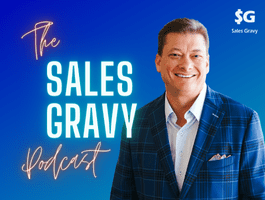Menu
Skipping Past the Four Types of Objections
Skipping Past the Four Types of Objections

Podcast: Play in new window | Download
The Four Types of Sales Objections
Jeb Blount, the Author of Objections: The Ultimate Guide for Mastering The Art and Science of Getting Past No does a deep dive into the four objections you face in sales. You’ll learn techniques that you can use on your next sales call to skip past sales objections.
On this episode, I have a conversation with Chris McDonough. He’s a talented and successful sales leader at ZoomInfo.
Chris and I talk about why it’s stupid to avoid objections, how to reduce buyer resistance, how to manage your disruptive emotions in the face of objections, and techniques for skipping past objections.
There’s four key types of objections that we run into in sales. And they’re not what you normally think about. So typically when we think about objections, we think about objections like, “I’m not interested,” or “It costs too much,” or “I’ve got to go talk to my boss.” Those are the things we typically fixate on.
But if you think about sales as a process, all the way from prospecting into closing a deal, you get objections in the deal in four places.
Prospecting Objections
The first are prospecting objections. They typically become the most harsh objections. They’re the reason why people don’t prospect, because these objections can be tough. They can be difficult.
And because you’re interrupting a stranger, they happen really, really fast, and you have to be good on your feet when you’re dealing with these objections.
Red Herring Objections
Then there are red herring objections, and these are not necessarily objections.
They are things that prospects typically say at the beginning of a sales call that have a tendency to derail salespeople inside of a sales call.
So for example, a rep is doing a demo and at the very beginning of the process gets interrupted, then off to the races, the rep goes, getting off of process, chasing down that red herring.
Then you end up burning up the 30 minutes you had for the demo chasing something that didn’t really matter that much. So red herring objections are much more about getting control of the call.
Micro Commitment and Next Step Objections
Then there are a micro commitment and next step objections. And these are the objections that reps get when they’re trying to advance a deal through the pipeline.
So where reps really mess up is, and you’ve probably seen this as a sales manager, you’ve got deals in the pipeline that are stalled. Almost every stalled deal in your pipeline exists because the rep didn’t secure a next step.
And the next step is something that’s on the prospect’s calendar and on your calendar. So next step objections happen when you ask the person, “Hey, let’s set up this,” or “Let’s do a pilot,” or “Let’s talk to your boss,” or what have you. Whatever the next step is, you get those.
Buying Commitment Objections
And then finally there are buying commitment objections, and these are the objections that we traditionally get. These are the sexy objections, if you want to call them that.
Usually they’re the objections that, when I ask for the deal, when I’m trying to close the deal, the person says, “Whoa, Whoa, Whoa, Whoa. I need to go think about it,” or “This costs too much.”
Listen to the podcast to learn more about these objections and how to get past them.
The Seven Rules of Sales Negotiation ebook is a companion resource to Jeb Blount’s new book, INKED, that levels the playing field by giving you the strategies, tactics, techniques, skills, and human-influence frameworks required to become a powerful and effective sales negotiator. Download the FREE Seven Rules of Sales Negotiation training guide here.
OTHER EPISODES YOU MIGHT LIKE
SUBMIT A SALES QUESTION TO JEB
LISTEN TO THE SALES GRAVY PODCAST ON YOUR FAVORITE APP








